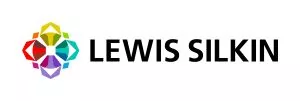We've put together a jargon buster of the key terminology used when discussing sustainability and real estate.
BIM (Building Information Modelling) – A collaborative process that uses a single 3D data structure to allow architects, engineers and other construction professionals to design, plan and manage a construction project throughout its lifecycle, as well as the building's continuing maintenance and operation.
BREEAM® – The Building Research Establishment Environmental Assessment Method. A leading global green building rating system which evaluates the building's specifications, design, construction and use against the following categories: Management, Water, Energy, Transport, Health & Wellbeing, Resources, Resilience, Land Use & Ecology, Pollution, Materials, Waste and Innovation. The BREEAM® ratings range from Acceptable (In-Use scheme only) to Pass, Good, Very Good, Excellent to Outstanding.
Circular Economy – An alternative to traditional linear economies which use and consume resources once before throwing the resource away. A circular economy promotes recycling, repairing, repurposing or refurbishing products and materials.
Embodied Carbon – This is the carbon associated with a building which is not emitted through operational processes. It is the carbon “hidden” or embodied in the materials and manufacturing processes used to construct and create the building, rather than emitted while the building is being used.
Environmental Improvements – These are improvements made to a building to improve its environmental performance.
This might include the use of LED lighting, the removal of gas in favour of electricity (increasingly from renewable sources), smart energy metering and improving the physical fabric of the premises to make it more energy efficient.
Environmental Management System – This is a framework which integrates a business or organisation's policies, procedures and processes to improve, monitor, summarise, and report on environmental performance to internal and external stakeholders. It is often developed in compliance with the ISO 14001 standard.
Environmental Performance – This looks to measure the adverse impact a building has on the environment, and can include measurements in relation to the following:
- Energy consumption;
- Water consumption and discharge;
- Waste generation and management;
- Generation and/or emission of greenhouse gases;
- Other environmental issues or net zero objectives.
EPC – An Energy Performance Certificate gives a property an energy efficiency rating from A (most efficient) to G (least efficient).
Green Lease – A lease which incorporates provisions intended to help improve the environmental performance of a building and make the occupation and operation of the property more sustainable.
A green lease might include specific obligations in relation to energy efficiency, water use, choice of electricity for the building and waste reduction.
Greenhushing – The opposite of greenwashing. Intentionally hiding or failing to communicate environmental or sustainability commitments. This may be out of fear of greenwashing claims or, in the alternative, being criticised for doing too little.
Greenwashing – Misleading claims which state or create the impression that the organisation, business, asset or focus of the claim is more sustainable or environmentally friendly than it is.
GRESB – Formerly known as the Global Real Estate Sustainability Benchmark, GRESB produces internationally recognised benchmarks to track environmental, social and governance (ESG) performance in the commercial real estate and infrastructure sector. It provides assessments which allow investors to asses the ESG performance of a portfolio and compare performances to peers.
MEES - Minimum Energy Efficiency Standards set by legislation and the standards imposed are becoming increasingly onerous over time.
Under current MEES regulations, it is unlawful for offices to be let or to continue to be let if they have an EPC rating of F or G.
By 2027, this minimum standard is expected to become a C rating and then a B rating in 2030.
Net Zero – At net zero, an equal amount of greenhouse gases (carbon dioxide, methane and nitrous oxide) is removed from the atmosphere as is released into it, resulting in a zero increase in net emissions.
Net Zero Carbon – Balancing the amount of carbon dioxide which is released or emitted by a building and/or activity with the amount of carbon which is offset, captured, or sequestered.
Operational Carbon – This is the carbon emitted while the building is being used — for example, the energy needed for lighting, ventilation, temperature regulation, and electricity in the building.
Science - based Targets – Carbon reduction targets which are clear, measurable and created in line with current climate science. The Science-Based Target Initiative (SBTi) is the official third-party body for the validation of science-based targets.
Sustainable Materials – These are materials which have minimal environmental impact. They could be materials which are:
- reused, reclaimed, recyclable or reusable;
- made without depleting non-renewable resources;
- made without disrupting key natural resource systems.
The content of this article is intended to provide a general guide to the subject matter. Specialist advice should be sought about your specific circumstances.



